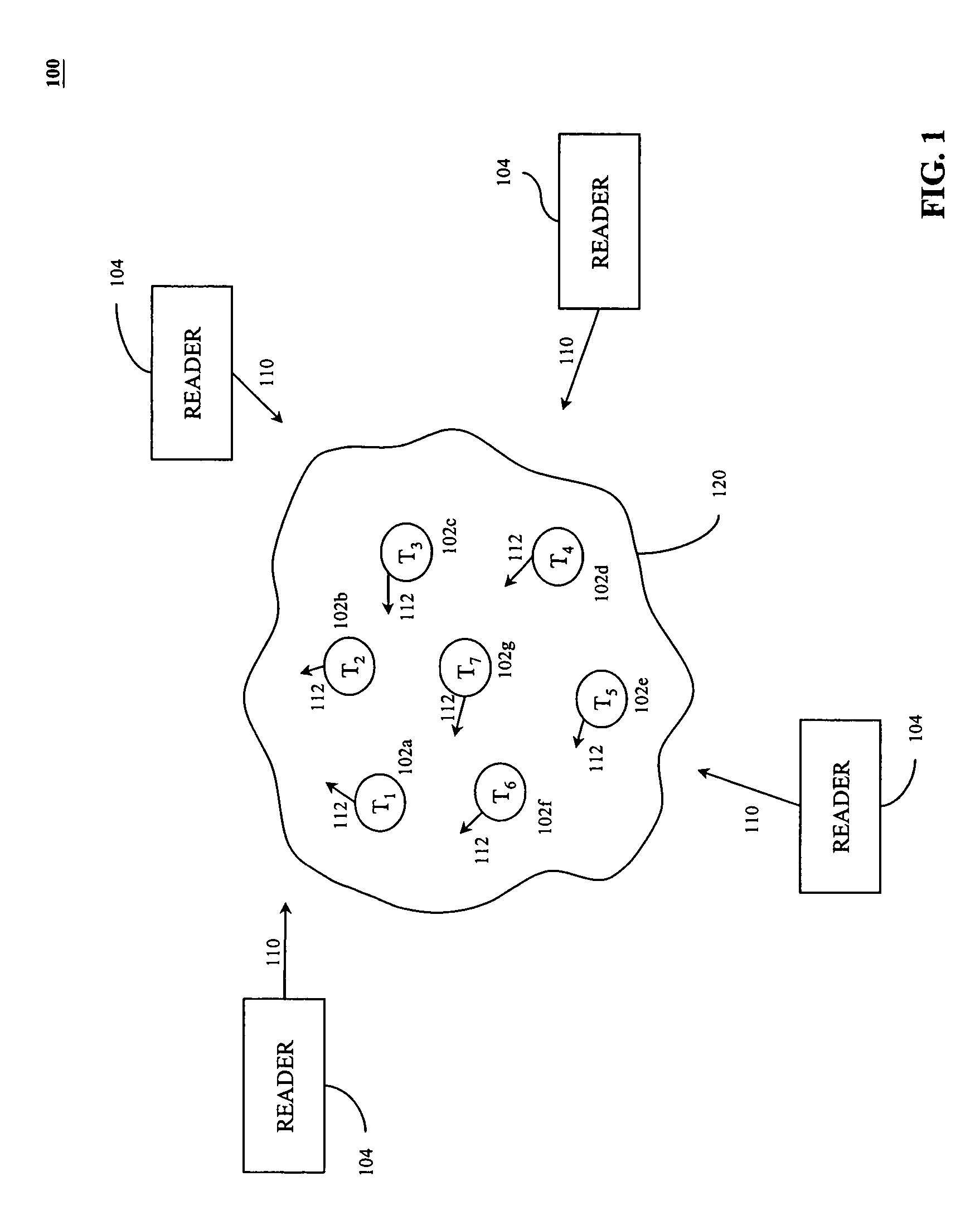Method for the efficient reading of a population of radio frequency identification tags with unique identification numbers over a noisy air channel
a radio frequency identification and unique identification technology, applied in the direction of transmission, instruments, indirect connection of subscribers, etc., can solve the problems of slow and expensive, inability of the rfid reader to quickly and accurately identify the rfid tags, and inability to be robust in the presence of noise, so as to optimize the efficiency of the read cycle and efficiently read the binary tree
- Summary
- Abstract
- Description
- Claims
- Application Information
AI Technical Summary
Benefits of technology
Problems solved by technology
Method used
Image
Examples
Embodiment Construction
1. Introduction
1.1 Tag Interrogation Environment
[0025]Before describing the present invention in detail, it is helpful to describe an example environment in which the invention may be implemented. The present invention is particularly useful in radio frequency identification (RFID) applications operating in noisy environments. FIG. 1 illustrates an environment 100 where one or more RFID tag readers 104 communicate with an exemplary population of RFID tags 120, according to the present invention. As shown in FIG. 1, the population of tags 120 includes seven tags 102a–102g. According to embodiments of the present invention, a population of tags 120 may include any number of tags 102. In some embodiments, a very large number of tags 102 may be included in a population of tags 120, including hundreds, thousands, or even more.
[0026]Exemplary environment 100 also includes one or more readers 104. These readers 104 may operate independently or may be coupled together to form a reader netwo...
PUM
 Login to View More
Login to View More Abstract
Description
Claims
Application Information
 Login to View More
Login to View More - R&D
- Intellectual Property
- Life Sciences
- Materials
- Tech Scout
- Unparalleled Data Quality
- Higher Quality Content
- 60% Fewer Hallucinations
Browse by: Latest US Patents, China's latest patents, Technical Efficacy Thesaurus, Application Domain, Technology Topic, Popular Technical Reports.
© 2025 PatSnap. All rights reserved.Legal|Privacy policy|Modern Slavery Act Transparency Statement|Sitemap|About US| Contact US: help@patsnap.com



